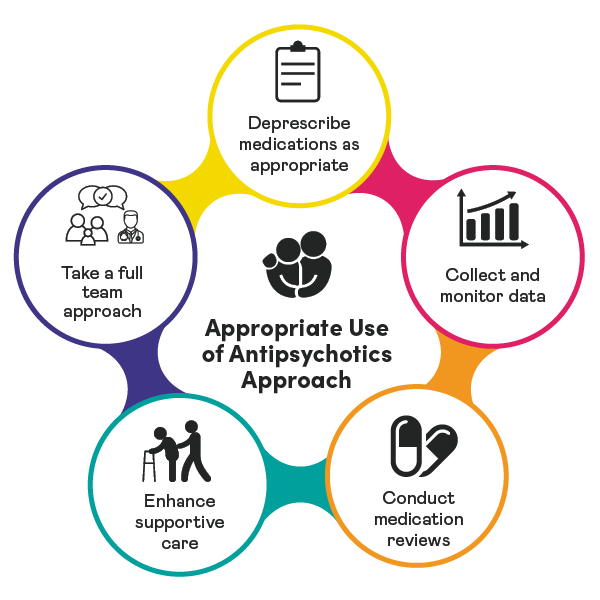With support from expert advisors, Healthcare Excellence Canada has created these simple tools designed to help long-term care staff and essential care partners provide the best support for people living with dementia. These resources also guide care providers and partners on managing responsive behaviours without medication.
Explore the Appropriate Use of Antipsychotics Toolbox
All the resources on this page are part of the Appropriate Use of Antipsychotics in Long Term Care Toolbox, a central collection designed to help everyone involved in dementia care, from healthcare leaders and prescribers to families and care partners, find practical ways to address responsive behaviours.
Below, you’ll find these resources grouped by topic to help you quickly locate the tools and guidance most relevant to your role. Use the full toolbox to explore all sections together, navigate easily and download what you need to support your team.
Sparking Change in the Appropriate Use of Antipsychotics Awards Program
Interested in sparking change? Open to long-term care homes across the country, this program provides support for implementing an appropriate use of antipsychotics approach. Learn how to register and ways your team can win monetary awards.
Sparking Change in the Appropriate Use of Antipsychotics Awards Program
Interested in sparking change? Open to long-term care homes across the country, this program provides support for implementing an appropriate use of antipsychotics approach. Learn how to register and ways your team can win monetary awards.
What’s inside for home leaders?
- Tips on how to establish a team of staff, family members and care partners who are dedicated and accountable to lead the initiative.
- Focused insights to ensure staff, people living with dementia and their families have the information and skills they need to improve care, support and deprescribing.
- Guidelines on how to celebrate success and review progress in improving care, support and appropriate use of antipsychotics for people living with dementia.
Learn more about guidance for healthcare leaders (PDF 300KB)
What’s inside for people living with dementia and their care partners?
- Tailored information on why antipsychotics are not the best choice for reducing responsive behaviours.
- An overview of the serious side effects that come with inappropriate antipsychotic usage.
- Insights into the benefits of supervised and strategic deprescribing plans.
Learn more about guidance for people living with dementia and care partners (PDF 235KB)
What’s inside for prescribers?
- Insights on how adopting a team can best identify the people who are candidates for deprescribing antipsychotics.
- Tips on the benefits of applying a slow and steady approach to deprescribing antipsychotics.
- Guidance on how to lead and participate in team huddles that allow you to review and adjust the supportive care and deprescribing process effectively.
Related programs
{{currentEntry.friendlyTitle.length > 0 ? currentEntry.friendlyTitle : currentEntry.title}}
- {{param_allText}}
- {{decodeURI(filterType.title).replaceAll('+', ' ').replaceAll('%26', '&')}}
- {{param_allText}}
- {{decodeURI(filterType.title).replaceAll('+', ' ').replaceAll('%26', '&')}}
- {{param_allText}}
- {{decodeURI(filterType.title).replaceAll('+', ' ').replaceAll('%26', '&')}}
